ZTE ZTEBLADEA512 Multi-Mode Digital Mobile Phone User Manual Quick Start Guide
ZTE Corporation Multi-Mode Digital Mobile Phone Quick Start Guide
ZTE >
Quick Start Guide

1
ZTE BLADE A512
Quick Start Guide
2
LEGAL INFORMATION
Copyright © 2016 ZTE CORPORATION.
All rights reserved.
No part of this publication may be quoted, reproduced, translated or
used in any form or by any means, electronic or mechanical,
including photocopying and microfilm, without the prior written
permission of ZTE Corporation.
Notice
ZTE Corporation reserves the right to make modifications on print
errors or update specifications in this guide without prior notice.
We offer self-service for our smart terminal device users. Please
visit the ZTE official website (at www.ztedevice.com) for more
information on self-service and supported product models.
Information on the website takes precedence.
Visit http://www.ztedevice.com to download the user manual. Just
click Support > Manuals from the home page and then select your
location, product type, and name to search for related support
information.
Disclaimer
ZTE Corporation expressly disclaims any liability for faults and
damages caused by unauthorized modifications of the software.
Images and screenshots used in this guide may differ from the
actual product. Content in this guide may differ from the actual
product or software.
Trademarks
ZTE and the ZTE logos are trademarks of ZTE Corporation.
Google and Android are trademarks of Google, Inc.

3
The Bluetooth
®
trademark and logos are owned by the Bluetooth
SIG, Inc. and any use of such trademarks by ZTE Corporation is
under license.
microSDXC Logo is a trademark of SD-3C, LLC.
Qualcomm
®
Snapdragon™ processors are products of Qualcomm
Technologies, Inc.
Qualcomm and Snapdragon are trademarks of Qualcomm
Incorporated, registered in the United States and other countries.
Used with permission.
Other trademarks and trade names are the property of their
respective owners.
Version No.: R1.0
Edition Time : May 9, 2016
Manual No.:
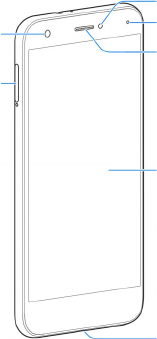
4
Getting to Know Your Phone
Front camera
Touch screen
Earpiece
Proximity &
light sensor
Charging/
micro-USB jack
Indicator light
nano-
SIM/
microSDX
C
card tray
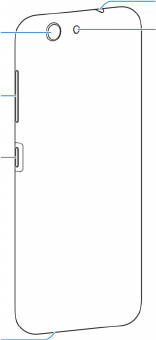
5
Volume
key
Power key
Flash
Headset jack
Back camera
Speaker
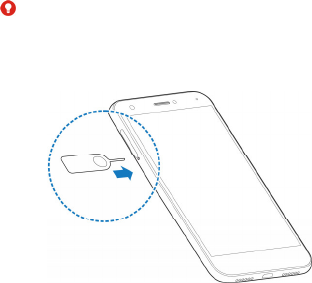
6
Installing the nano-SIM Card and the
microSDXC™ Card(Optional)
WARNING!
To avoid damage to the phone, do not use any other kind of SIM
cards, or any non-standard nano-SIM card cut from a SIM card.
You can get a standard nano-SIM card from your service provider.
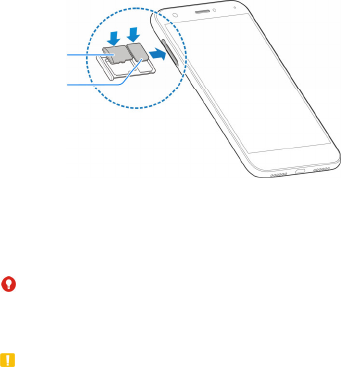
7
Charging the Phone
Your phone’s battery should have enough power for the phone to
turn on, find a signal, and make a few calls. You should fully charge
the battery as soon as possible.
WARNING!
Use only ZTE-approved chargers and cables. The use of
unapproved accessories could damage your phone or cause the
battery to explode.
CAUTION:
Do not change the built-in rechargeable battery in your phone by
yourself. The battery can only be changed by ZTE or ZTE
authorised service provider.
nano-
SIM
card
microSDX
C
card
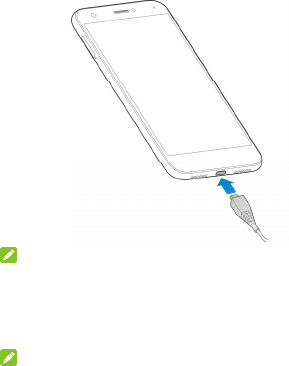
8
NOTE:
If the battery is extremely low, you may be unable to power on the
phone even when it is being charged. In this case, try again after
charging the phone for at least 20 minutes. Contact the customer
service if you still cannot power on the phone after prolonged
charging.
NOTE:
If the screen freezes or takes too long to respond, try pressing and
holding the Power key for about 10 seconds to restart the phone.
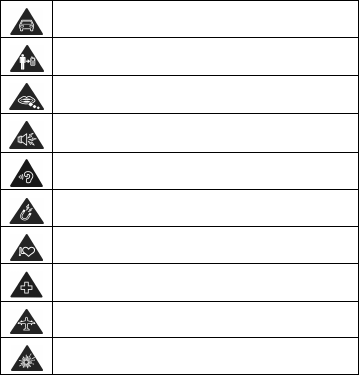
9
Product Safety Information
Don’t make or receive phone calls while driving. Never
text while driving.
Keep your phone at least 15 mm away from your ear or
body while making calls.
Small parts may cause choking.
Your phone can produce a loud sound.
To prevent possible hearing damage, do not listen at
high volume levels for long periods.
Avoid contact with anything magnetic.
Keep away from pacemakers and other electronic
medical devices.
Turn off when asked to in hospitals and medical facilities.
Turn off when told to on aircraft and at airport.
Turn off when near explosive materials or liquids.
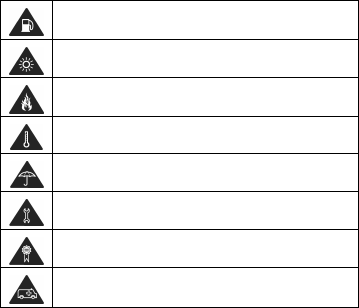
10
Don’t use at gas stations.
Your phone may produce a bright or flashing light.
Don’t dispose of your phone in fire.
Avoid extreme temperatures.
Avoid contact with liquids. Keep your phone dry.
Do not attempt to disassemble your phone.
Only use approved accessories.
Don’t rely on your phone as a primary device for
emergency communications.
RF Exposure
Your phone contains a transmitter and a receiver. When it is ON, it
receives and transmits RF energy. When you communicate with your
phone, the system handling your call controls the power level at which
your phone transmits.
11
Specific Absorption Rate (CE SAR)
Your mobile device is a radio transmitter and receiver. It is designed
not to exceed the limits for exposure to radio waves recommended
by international guidelines. These guidelines were developed by the
independent scientific organization ICNIRP and include safety
margins designed to assure the protection of all persons,
regardless of age and health.
The guidelines use a unit of measurement known as Specific
Absorption Rate, or SAR. The SAR limit for mobile devices is 2
W/kg and the highest SAR value for this device when tested at the
head and body is below the limit. The detailed SAR value and
information is available at the following internet address:
http://certification.ztedevice.com. As mobile devices offer a range of
functions, they can be used in other positions, such as on the body
as described in the user manual**.
As SAR is measured utilizing the device’s highest transmitting
power, the actual SAR of this device while operating is typically
below that indicated above. This is due to automatic changes to the
power level of the device to ensure it only uses the minimum power
required to communicate with the network.
* The tests are carried out in accordance with EN 50360, EN 50566,
EN 62479, EN 62209-1 and EN 62209-2.
** Please see body worn operation in the user manual.
12
FCC RF Exposure Information (SAR)
This phone is designed and manufactured not to exceed the emission
limits for exposure to radio frequency (RF) energy set by the Federal
Communications Commission of the United States.
During SAR testing, this device was set to transmit at its highest
certified power level in all tested frequency bands, and placed in
positions that simulate RF exposure in usage against the head with no
separation, and near the body with the separation of 10 mm. Although
the SAR is determined at the highest certified power level, the actual
SAR level of the device while operating can be well below the
maximum value. This is because the phone is designed to operate at
multiple power levels so as to use only the power required to reach
the network. In general, the closer you are to a wireless base station
antenna, the lower the power output.
The exposure standard for wireless devices employing a unit of
measurement is known as the Specific Absorption Rate, or SAR. The
SAR limit set by the FCC is 1.6 W/kg.
Tests for SAR are conducted using standard operating positions
accepted by the FCC with the device transmitting at its highest
certified power level in all tested frequency bands.
The FCC has granted an Equipment Authorization for this model
phone with all reported SAR levels evaluated as in compliance with
the FCC RF exposure guidelines. SAR information on this model
phone is on file with the FCC and can be found under the Display
13
Grant section of www.fcc.gov/oet/ea/fccid after searching on FCC ID:
SRQ-ZTEBLADEA512.
For this device, the highest reported SAR value for usage against the
head and body is below the SAR limit. The detailed SAR value and
information is available at the following internet address:
http://certification.ztedevice.com
While there may be differences between the SAR levels of various
phones and at various positions, they all meet the government
requirements.
SAR compliance for body-worn operation is based on a separation
distance of 10 mm between the unit and the human body. Carry this
device at least 10 mm away from your body to ensure RF exposure
level compliant or lower to the reported level. To support body-worn
operation, choose the belt clips or holsters, which do not contain
metallic components, to maintain a separation of 10 mm between this
device and your body.
RF exposure compliance with any body-worn accessory, which
contains metal, was not tested and certified, and using such
body-worn accessory should be avoided.

14
FCC Regulations
This device complies with part 15 of the FCC Rules. Operation is
subject to the following two conditions: (1) This device may not cause
harmful interference, and (2) this device must accept any interference
received, including interference that may cause undesired operation.
CAUTION:
Changes or modifications not expressly approved by the
manufacturer could void the user’s authority to operate the equipment.
The antenna(s) used for this transmitter must not be co-located or
operating in conjunction with any other antenna or transmitter.
NOTE:
This equipment has been tested and found to comply with the limits
for a Class B digital device, pursuant to part 15 of the FCC Rules.
These limits are designed to provide reasonable protection against
harmful interference in a residential installation. This equipment
generates, uses and can radiate radio frequency energy and, if not
installed and used in accordance with the instructions, may cause
harmful interference to radio communications. However, there is no
guarantee that interference will not occur in a particular installation. If
this equipment does cause harmful interference to radio or television
reception, which can be determined by turning the equipment off and
on, the user is encouraged to try to correct the interference by one or
more of the following measures:
15
●
Reorient or relocate the receiving antenna.
●
Increase the separation between the equipment and receiver.
●
Connect the equipment into an outlet on a circuit different from that
to which the receiver is connected.
●
Consult the dealer or an experienced radio/TV technician for help.
Body Worn Operation
Important safety information regarding radio frequency radiation
(RF) exposure. To ensure compliance with RF exposure guidelines
the phone must be used with a minimum of 10 mm separation from
the body. Failure to observe these instructions could result in your
RF exposure exceeding the relevant guideline limits.
Limiting Exposure to Radio Frequency (RF) Fields
For individuals concerned about limiting their exposure to RF fields,
the World Health Organization (WHO) provides the following
advice:
Precautionary measures: Present scientific information does not
indicate the need for any special precautions for the use of mobile
phones.
If individuals are concerned, they might choose to limit their own or
their children's RF exposure by limiting the length of calls, or using
'hands-free' devices to keep mobile phones away from the head
and body.
16
Further information on this subject can be obtained from the WHO
home page http://www.who.int/peh-emf (WHO Fact sheet 193: June
2000).
Distraction
Driving
Full attention must be given to driving at all times in order to reduce
the risk of an accident. Using a phone while driving (even with a
hands free kit), causes distraction and can lead to an accident. You
must comply with local laws and regulations regarding the use of
wireless devices while driving.
Operating Machinery
Full attention must be given to operating the machinery in order to
reduce the risk of an accident.
Product Handling
You alone are responsible for how you use your phone and any
consequences of its use. You must always switch off your phone
wherever the use of a phone is prohibited.
Use of your phone is subject to safety measures designed to
protect users and their environment.
17
●
Always treat your phone and its accessories with care and keep
it in a clean and dust-free place.
●
Do not expose your phone or its accessories to open flames or
lit tobacco products.
●
Do not expose your phone or its accessories to liquid, moisture
or high humidity.
●
Do not drop, throw or try to bend your phone or its accessories.
●
Do not use harsh chemicals, cleaning solvents, or aerosols to
clean the device or its accessories.
●
Do not paint your phone or its accessories.
●
Do not attempt to disassemble your phone or its accessories,
only authorized personnel must do so.
●
Do not expose your phone or its accessories to extreme
temperatures, minimum -5 °C and maximum 40 °C
●
The camera lens is made out of glass. Should the lens break,
care should be taken to avoid injury due to broken glass. Keep
out of reach of children.
●
Please check local regulations for disposal of electronic
products. Do not carry your phone in your back pocket as it
could break when you sit down.
●
Do not carry your phone in your back pocket as it could break
when you sit down.
18
Small Children
Do not leave your phone and its accessories within the reach of
small children or allow them to play with it. They could hurt
themselves or others, or could accidentally damage the phone.
Your phone contains small parts with sharp edges that may cause
an injury or which could become detached and create a choking
hazard.
Demagnetization
To avoid the risk of demagnetization, do not allow electronic
devices or magnetic media close to your phone for a long time.
Electrostatic Discharge (ESD)
Do not touch the SIM card's metal connectors.
Power Supply
Do not connect your device to the power supply or switch it on until
instructed to do so in the installation instructions.
Antenna
Do not touch the antenna unnecessarily.
19
Normal Use Position
When placing or receiving a phone call, you’re your phone to your
ear, with the bottom towards your mouth or as you would a fixed line
phone.
Air Bags
Do not place a phone in the area over an air bag or in the air bag
deployment area. Store the phone safely before driving your
vehicle.
Seizures / Blackouts
Your phone can produce a bright or flashing light.
Repetitive Strain Injuries (RSI)
To minimize the risk of RSI, when texting or playing games with
your phone:
●
Do not grip the phone too tightly.
●
Press the buttons lightly.
●
Make use of the special features in the handset which minimize
the number of buttons which have to be pressed, such as
message templates and predictive text.
●
Take lots of breaks to stretch and relax.
20
Emergency Calls
This phone, like any wireless phone, operates using radio signals,
which cannot guarantee connection in all conditions. Therefore, you
must never rely solely on any wireless phone for emergency
communications.
Loud Noise
This phone is capable of producing loud noises which may damage
your hearing.
MP3 and Video Player Function
When listening to pre-recorded music or watching videos on your
device, with headphones or earphones at high volumes, you run the
risk of permanent damage to your hearing.
Even if you are used to listening to music at a high volume and it
seems acceptable to you, you still risk damaging your hearing.
Reduce the sound volume to a reasonable level and avoid using
headphones for an excessive period of time to avoid hearing
damage.
Different headphones, earphones or ear buds may deliver a higher
or lower volume, at the same volume setting on your device. Always
start at a low volume setting. Do not listen to music or video with
headphones while driving.

21
Protect Your Hearing
To prevent possible hearing damage, do not listen at
high volume levels for long periods. Exercise caution
when holding your device near your ear while the
loudspeaker is in use.
Bright Light
This phone is capable of producing flash of light or can be used as
a torch. Do not use it too close to the eyes.
Phone Heating
Your phone may become warm during charging and during normal
use.
Electrical Safety
Accessories
Use only approved accessories. Do not connect with incompatible
products or accessories. Take care not to touch or allow metal
objects, such as coins or key rings, to contact or short-circuit the
battery terminals.
22
Connection to a Car
Seek professional advice when connecting a phone interface to the
vehicle electrical system.
Faulty and Damaged Products
Do not attempt to disassemble the phone or its accessory. Only
qualified personnel must service or repair the phone or its
accessory. If your phone or its accessory has been submerged in
water, punctured, or subjected to a severe fall, do not use it until
you have taken it to be checked at an authorized service centre.
Battery Handling & Safety
Always switch the device off and disconnect the charger before
removing the battery. Only use the battery and charger supplied, or
manufacturer approved replacements intended for use with your
phone. Using other batteries and chargers could be dangerous. Do
not disassemble or short-circuit the battery. Accidental
short-circuiting can occur if a metallic object such as a key, paper
clip, or pen touches the terminals of the battery. Improper battery
use may result in a fire, explosion, or other hazard. If you believe
the battery has been damaged, do not use it; take it to a service
centre for testing.
23
Interference
Care must be taken when using the phone in close proximity to
personal medical devices, such as pacemakers and hearing aids.
Pacemakers
Pacemaker manufacturers recommend that a minimum separation
of 15 cm be maintained between a mobile phone and a pacemaker
to avoid potential interference with the pacemaker. To achieve this,
use the phone on the opposite ear to your pacemaker and do not
carry it in a breast pocket.
Hearing Aids
People with hearing aids or other cochlear implants may experience
interfering noises when using wireless devices or when one is
nearby. The level of interference will depend on the type of hearing
device and the distance from the interference source, increasing
the separation between them may reduce the interference. You may
also consult your hearing aid manufacturer to discuss alternatives.
Medical Devices
Please consult your doctor and the device manufacturer to
determine if operation of your phone may interfere with the
operation of your medical device.
24
Hospitals
Switch off your wireless device when requested to do so in
hospitals, clinics or health care facilities. These requests are
designed to prevent possible interference with sensitive medical
equipment.
Aircraft
Switch off your wireless device whenever you are instructed to do
so by airport or airline staff. Consult the airline staff about the use of
wireless devices on board the aircraft, if your device offers a 'flight
mode' this must be enabled prior to boarding an aircraft.
Interference in Cars
Please note that because of possible interference to electronic
equipment, some vehicle manufacturers forbid the use of mobile
phones in their vehicles unless a hands free kit with an external
antenna is included in the installation.
Explosive Environments
Petrol Stations and Explosive Atmospheres
In locations with potentially explosive atmospheres, obey all posted
25
signs to turn off wireless devices such as your phone or other radio
equipment. Areas with potentially explosive atmospheres include
fuelling areas, below decks on boats, fuel or chemical transfer or
storage facilities, areas where the air contains chemicals or
particles, such as grain, dust, or metal powders.
Blasting Caps and Areas
Turn off your mobile phone or wireless device when in a blasting
area or in areas where signs are posted turn off "two-way radios" or
"electronic devices" to avoid interfering with blasting operations.
26
Declaration of RoHS Compliance
To minimize the environmental impacts and take more
responsibilities to the earth we live on, this document shall serve as
a formal declaration that ZTE BLADE A512 manufactured by ZTE
CORPORATION is in compliance with the Directive 2011/65/EU of
the European Parliament - RoHS (Restriction of Hazardous
Substances) with respect to the following substances:
1. Lead (Pb)
2. Mercury (Hg)
3. Cadmium (Cd)
4. Hexavalent Chromium (Cr (VI))
5. Polybrominated biphenyls (PBBs)
6. Polybrominated diphenyl ethers (PBDEs)
ZTE BLADE A512 manufactured by ZTE CORPORATION meets
the requirements of Directive 2011/65/EU.
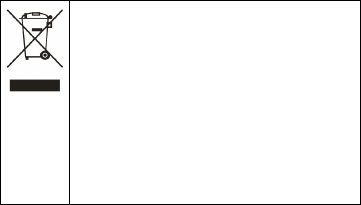
27
Disposal of Your Old Appliance
1. When this crossed-out wheeled bin symbol is
attached to a product, it means the product is
covered by the European Directive 2012/19/EU.
2. All electrical and electronic products should be
disposed of separately from the municipal waste
stream via designated collection facilities
appointed by the government or the local
authorities.
3. The correct disposal of your old appliance will
help prevent potential negative consequences for
the environment and human health.
For this product’s recycling information based on WEEE directive,
please send an e-mail to weee@zte.com.cn
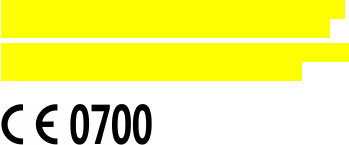
28
EC DECLARATION OF CONFORMITY
Hereby, ZTE Corporation declares that the radio equipment type
ZTE BLADE A512 is in compliance with Directive 1999/5/EC.
The full text of the EC declaration of conformity is available at the
following internet address: http://certification.ztedevice.com